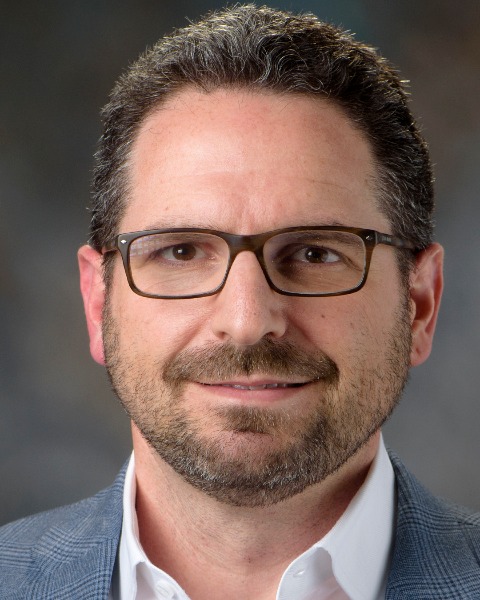HPB
P37: CA 19-9 Normalization Following Neoadjuvant Therapy and Yield of Laparoscopy for Pancreatic Ductal Adenocarcinoma

Brittany C. Fields, MD, MPH (she/her/hers)
T32 Resident Research Fellow
The University of Texas MD Anderson Cancer Center
Houston, Texas, United States
Brittany C. Fields, MD, MPH (she/her/hers)
T32 Resident Research Fellow
The University of Texas MD Anderson Cancer Center
Houston, Texas, United States
Brittany C. Fields, MD, MPH (she/her/hers)
T32 Resident Research Fellow
The University of Texas MD Anderson Cancer Center
Houston, Texas, United States- TV
Tim Vreeland, MD
Clinical General Surgical Oncology Fellow
The University of Texas MD Anderson Cancer Center, United States 
Tim Newhook, MD
Assistant Professor
The University of Texas MD Anderson Cancer Center
Rebecca A. Snyder, MD, MPH (she/her/hers)
Associate Professor
The University of Texas MD Anderson Cancer Center
Houston, Texas, United States
Jess E. Maxwell, MD, MBA (she/her/hers)
Assistant Professor of Surgical Oncology
The University of Texas MD Anderson Cancer Center
Houston, Texas, United States- LP
Laura R. Prakash, MD
Clinical Research Scientist
The University of Texas MD Anderson Cancer Center, United States - MK
Michael P. Kim, MD
Associate Professor of Surgical Oncology
The University of Texas MD Anderson Cancer Center
Houston, Texas, United States 
Naruhiko Ikoma, MD, MS
Assistant Professor of Surgical Oncology
The University of Texas MD Anderson Cancer Center
Houston, Texas, United States- JL
Jeffrey E. Lee, MD
Vice President of Clinical Operations
The University of Texas MD Anderson Cancer Center
Houston, Texas, United States 
Matthew H.G Katz, MD (he/him/his)
Professor and Chair
Department of Surgical Oncology, The University of Texas MD Anderson Cancer Center
Houston, Texas, United States
Ching-Wei D. Tzeng, MD (he/him/his)
Associate Professor of Surgical Oncology
The University of Texas MD Anderson Cancer Center
Houston, Texas, United States
Oral Poster Presenter(s)
Submitter(s)
Author(s)
Methods:
A prospective institutional database was reviewed for PDAC treated with NT followed by laparoscopy prior to or on the date of planned resection (Feb. 2009 – Mar. 2023). Those who underwent laparoscopy to biopsy radiographically suspicious lesions were excluded. Clinicopathologic data, treatment details, and CA 19-9 from pre-NT (CA-PRE), mid-therapy (CA-MID) and post-NT (CA-POST) were analyzed.
Results: Of 612 patients who underwent laparoscopy, 16.7% (102/612) had laparoscopy prior to planned resection, 79.1% (484/612) on the date of planned resection, and 4.2% (26/612) had laparoscopy both prior to and on the date of planned resection. Only 5.2% (32/612) of all laparoscopies found metastatic disease. Of 68.8% (421/612) patients with an elevated CA-PRE and an available CA-POST, CA 19-9 normalization (decrease to less than 37 U/mL) was observed in 42.3% (178/421). CA 19-9 normalization was associated with negative laparoscopy (OR 0.44, 95% CI 0.21-0.91, p=0.028). The rate of positive laparoscopy was 2.8% (5/178) with CA 19-9 normalization, compared to 8.2% (20/243) with non-normalized CA19-9 (91.8%; 223/243). Laparoscopy on the resection date had higher odds of a positive finding with non-normalized vs. normalized CA 19-9 (10.1%, 19/187 vs. 2.1%, 3/144; OR 2.94, 95% CI 0.13-0.86, p=0.023). Late rising CA 19-9 (CA-POST > CA-MID) was observed in 23.4% (107/457) of patients with available values and was also associated with positive laparoscopy (OR 2.15, 95% CI 1.00-4.62, p=0.050).
Conclusions: Following NT, occult metastases are rarely found during routine laparoscopy. With CA 19-9 normalization after NT, the number needed to laparoscope to yield one positive finding was 35. With high-quality imaging, routine laparoscopy after induction chemotherapy has low sensitivity for identifying occult metastases. Instead, selective use of laparoscopy based on CA 19-9 trend would improve operating room resource utilization and be more cost-effective.
Learning Objectives:
- To determine number of laparoscopies needed to yield one positive finding in patients with CA19-9 normalization after neoadjuvant therapy.
- To describe how trends in CA 19-9 predict positivity of laparoscopy before intended resection for pancreatic ductal adenocarcinoma.
- To describe the association between laparoscopy findings and CA 19-9 increase between the midpoint of neoadjuvant therapy and resection.
